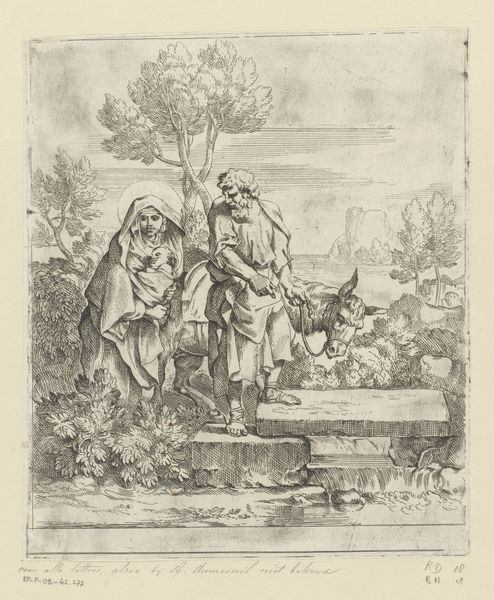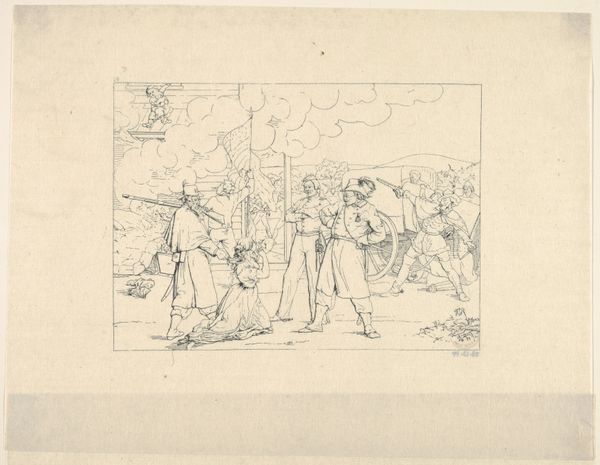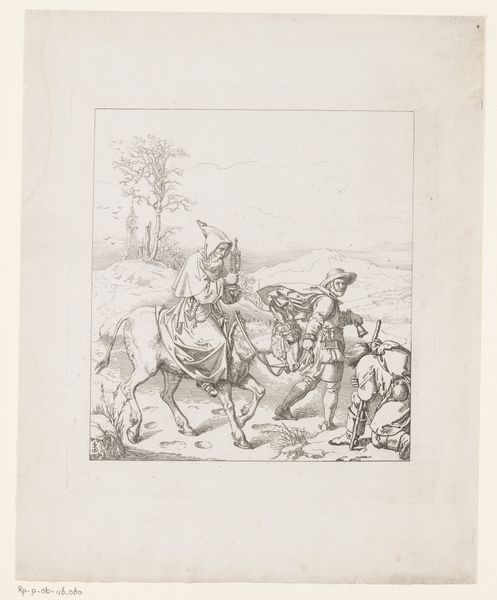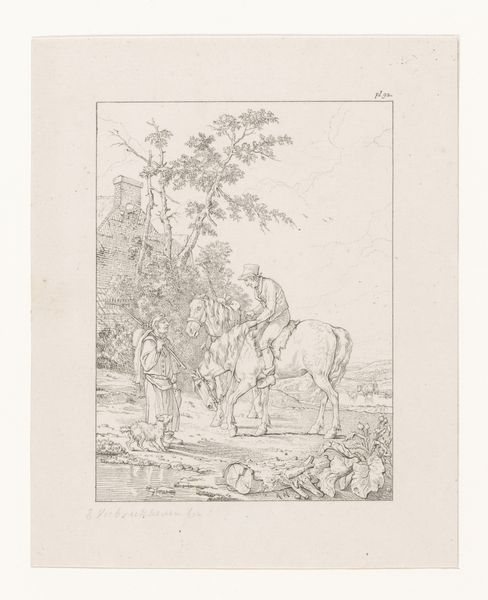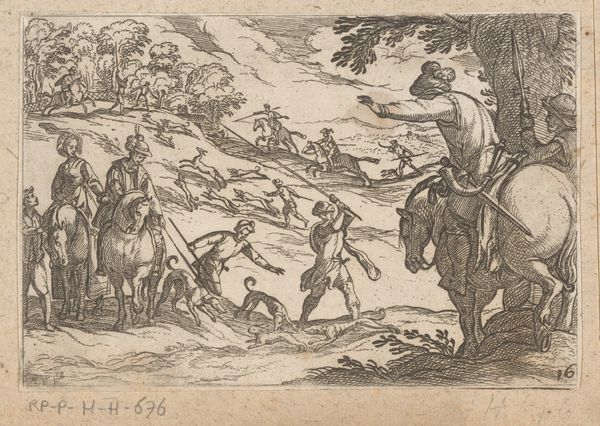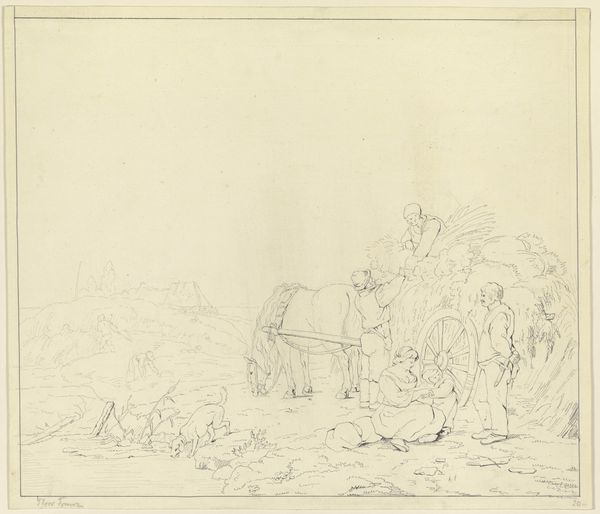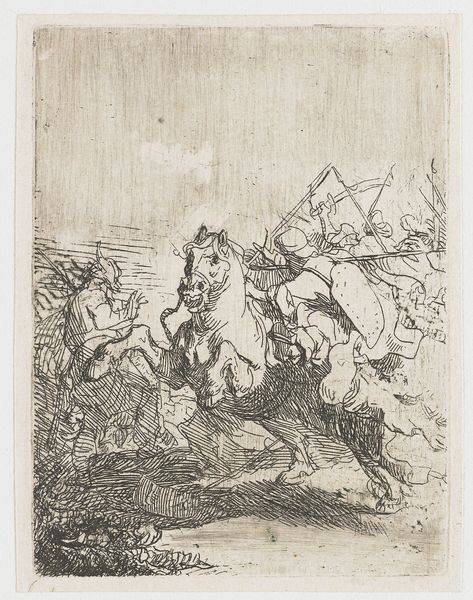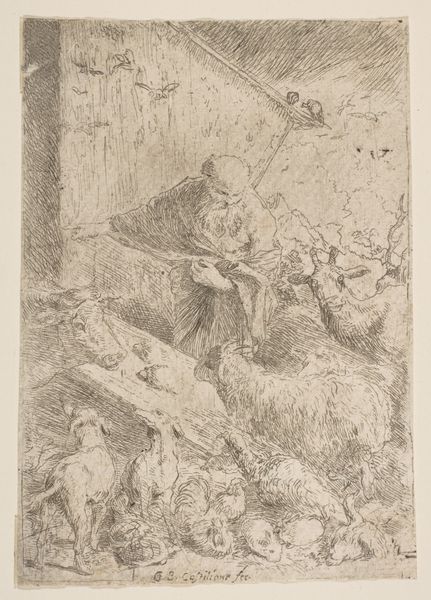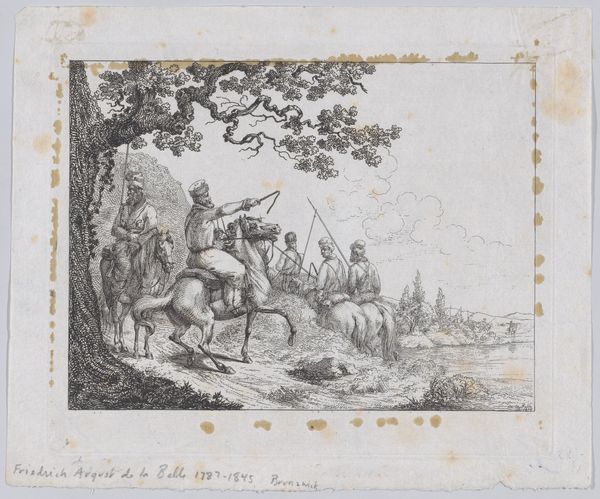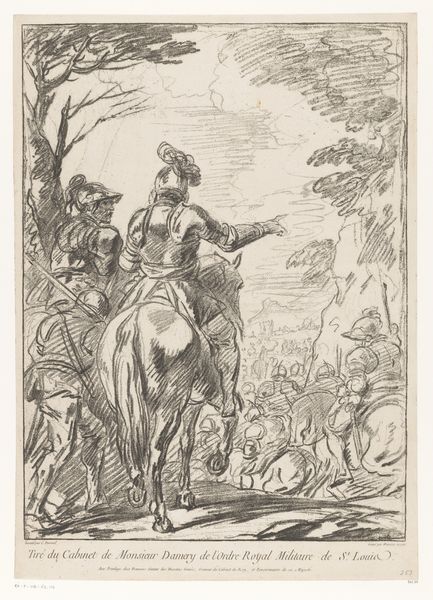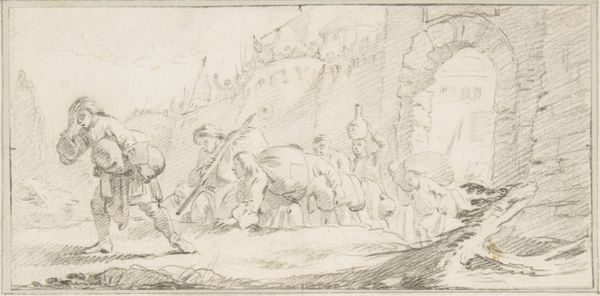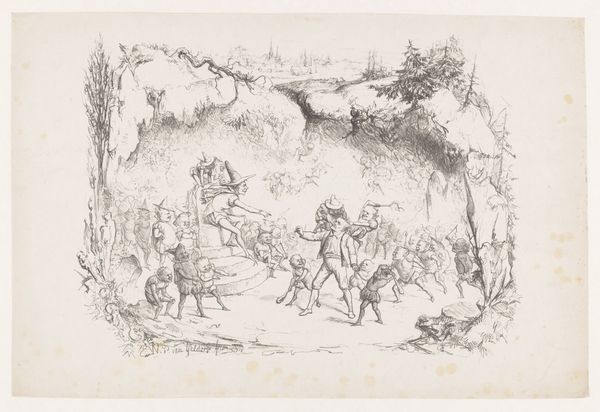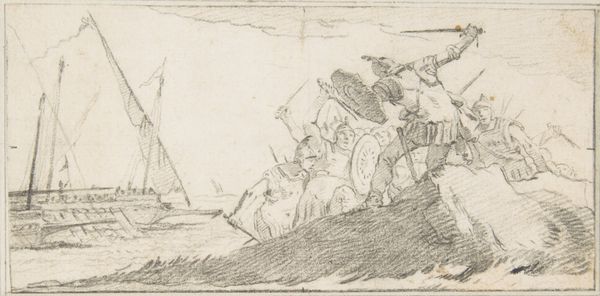
drawing, pencil
#
drawing
#
dutch-golden-age
#
landscape
#
pencil
#
genre-painting
#
realism
Dimensions: height 270 mm, width 188 mm
Copyright: Rijks Museum: Open Domain
Curator: Welcome. We’re standing before "Bereden soldaten voor een herberg" or "Mounted Soldiers Before an Inn," a pencil drawing created between 1650 and 1660 by Pieter de Molijn, now residing here at the Rijksmuseum. Editor: My first impression is of movement. The lines are incredibly active, creating a sense of a bustling, yet grounded scene. There's a visual dynamism that feels very present despite the humble medium. Curator: Indeed, and this drawing provides a fascinating snapshot of the Dutch Golden Age and its military culture. Inns at the time were central to civic and military life, acting as spaces for rest, gathering, and strategizing. Note how the soldiers, likely between postings, are depicted taking a brief pause. Editor: I’m drawn to how de Molijn uses hatching to create depth and texture. See the density of the lines that construct the large tree. Then compare the different techniques employed to depict its rough bark against the smoother coats of the horses, demonstrating close observational skill. Curator: Certainly, and we can see that the artist made close considerations of how those materials reflected the ongoing conflicts within Dutch society. The drawing embodies a prevailing realism, turning its gaze towards everyday life instead of classically heroic figures, making an implicit statement. Editor: The sketch also strikes me with its subtle asymmetry. The inn isn’t centered, and the tree provides a counterweight to the rightward movement of the soldiers, creating visual interest and imbalance—typical strategies for invigorating any composition. Curator: Considering its probable function as a preparatory study for a painting or print, the work also informs us about the contemporary production of images. The social relevance of depicting soldiers would vary during different political shifts of the mid-17th Century Netherlands. Editor: Absolutely, but it stands alone, and it is visually engaging regardless of contextualization. Even without knowing any context, the visual language communicates a scene teeming with understated realism. Curator: Seeing this work with you has really revealed its layered qualities, where daily life encounters political realities. It really illustrates the value of broadening one’s views in understanding art's lasting message. Editor: For me, it’s about those subtle compositional cues that make it unforgettable and which showcase De Molijn's talent at rendering so much character into such simple means.
Comments
No comments
Be the first to comment and join the conversation on the ultimate creative platform.
